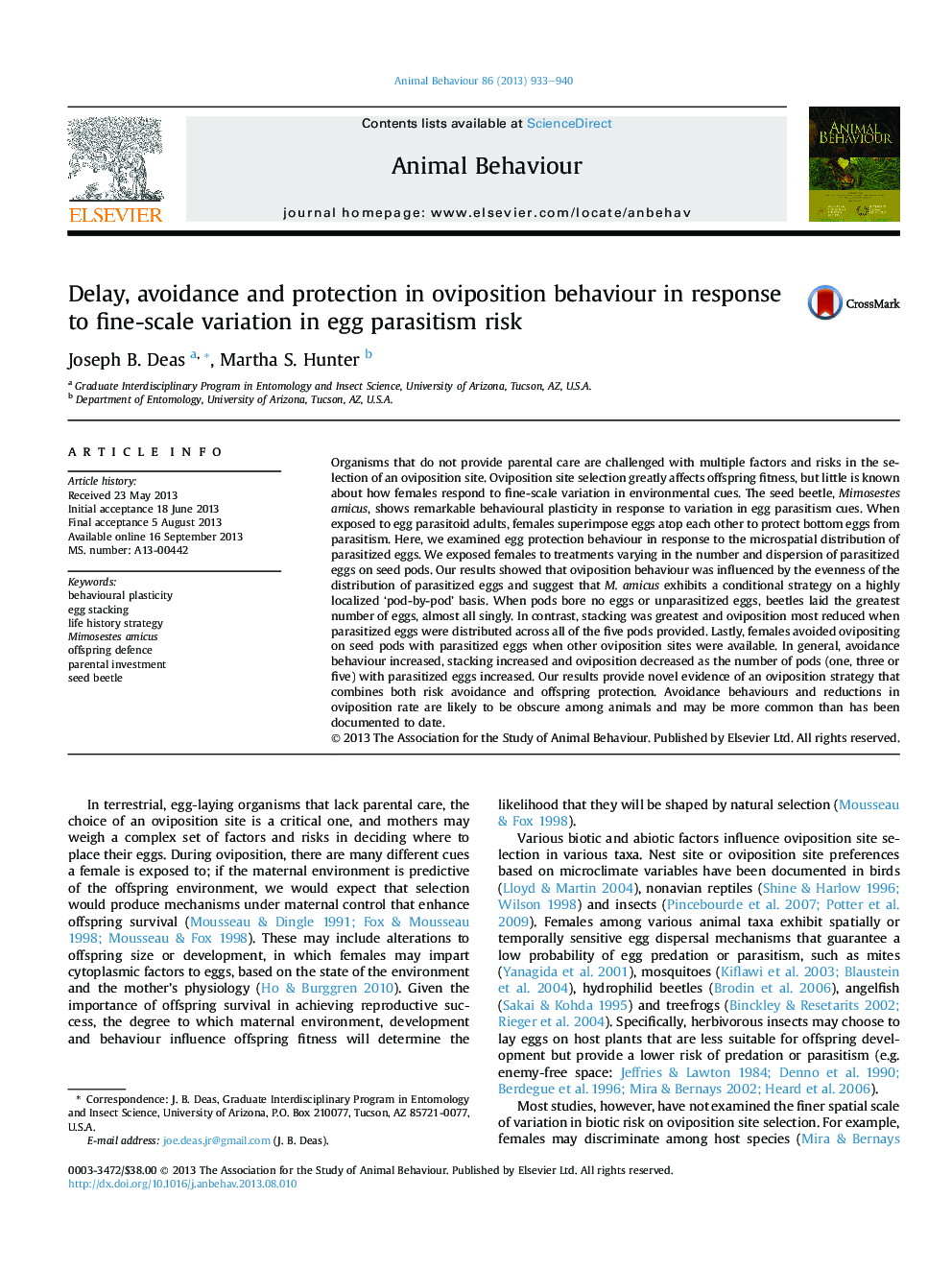| Article ID | Journal | Published Year | Pages | File Type |
|---|---|---|---|---|
| 2416480 | Animal Behaviour | 2013 | 8 Pages |
•Parasitized eggs induced egg stacking (laying 1–3 protective eggs atop another egg) in beetles.•Beetles showed two additional strategies based on the level of parasitism risk.•Female oviposition rates decreased as their encounter rate with parasitized eggs increased.•When laying eggs, beetles avoided laying on pods bearing parasitized eggs.•Egg stacks were laid almost exclusively when every pod bore parasitized eggs.
Organisms that do not provide parental care are challenged with multiple factors and risks in the selection of an oviposition site. Oviposition site selection greatly affects offspring fitness, but little is known about how females respond to fine-scale variation in environmental cues. The seed beetle, Mimosestes amicus, shows remarkable behavioural plasticity in response to variation in egg parasitism cues. When exposed to egg parasitoid adults, females superimpose eggs atop each other to protect bottom eggs from parasitism. Here, we examined egg protection behaviour in response to the microspatial distribution of parasitized eggs. We exposed females to treatments varying in the number and dispersion of parasitized eggs on seed pods. Our results showed that oviposition behaviour was influenced by the evenness of the distribution of parasitized eggs and suggest that M. amicus exhibits a conditional strategy on a highly localized ‘pod-by-pod’ basis. When pods bore no eggs or unparasitized eggs, beetles laid the greatest number of eggs, almost all singly. In contrast, stacking was greatest and oviposition most reduced when parasitized eggs were distributed across all of the five pods provided. Lastly, females avoided ovipositing on seed pods with parasitized eggs when other oviposition sites were available. In general, avoidance behaviour increased, stacking increased and oviposition decreased as the number of pods (one, three or five) with parasitized eggs increased. Our results provide novel evidence of an oviposition strategy that combines both risk avoidance and offspring protection. Avoidance behaviours and reductions in oviposition rate are likely to be obscure among animals and may be more common than has been documented to date.
